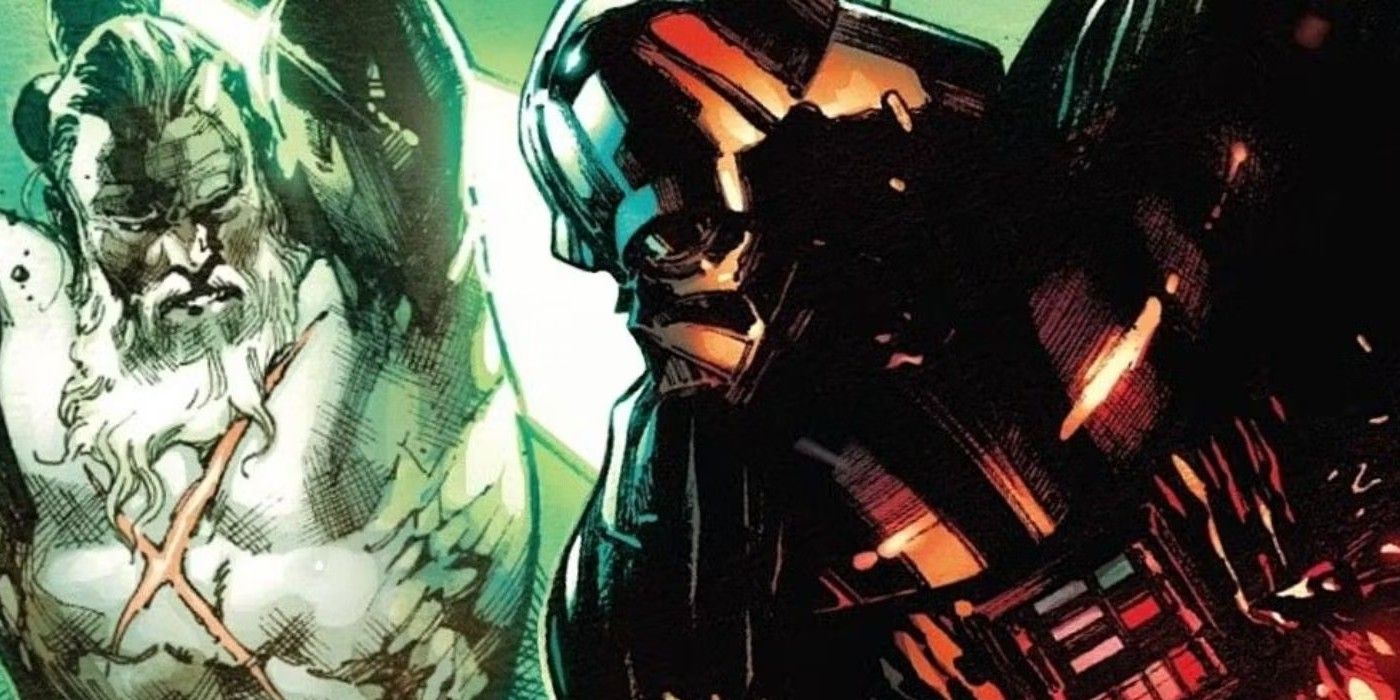
The ‘Star Wars: Darth Vader’ Comic Introduced the Practice of Bleeding Kyber Crystals
For years, the question of why Sith Lords and other dark side users had red lightsabers remained a mystery. The Star Wars: Darth Vader — Dark Lord of the Sith comic book by Charles Soule and Giuseppe Camuncoli actually sought to provide an answer in its opening arc, and it’s a rather compelling one: dark side users often take the lightsabers of the Jedi they slay, and pour all of their negative emotions into the kyber crystal. Sidious describes the process to Vader in Dark Lord of the Sith‘s first issue:
“Since kyber crystals are naturally attuned to the light side of the Force, those who serve the dark side must follow a different path. First, they must seize a pure crystal from the lightsaber of a Jedi they have vanquished in combat—for the saber of a Sith is not given. It is taken. Then, they must infuse that crystal with their pain, anger, and hatred, bending it to their will. This corrupts the crystal, aligning it with the dark side and making it bleed with unbridled crimson power…Once a crystal has been properly bled, the primal power it releases becomes not only a deadly instrument in the hands of a Sith Lord, but a symbol of their true strength in the dark side.”
Vader is then tasked by Sidious to kill the Jedi Master Kirak Infil’a, and upon succeeding, the Dark Lord of the Sith pours his immense rage into Infil’a’s kyber crystal, turning it red. Soule would later return to this concept in the Star Wars: The Rise of Kylo Ren miniseries, with Ben Solo bleeding a kyber crystal and causing it to splinter. This splintering had a unique side effect: it resulted in the crackling red blade Ben uses as Kylo Ren.
‘Star Wars: Darth Vader’ Introduced Other Elements That Play Into ‘The Acolyte’

The bleeding of a kyber crystal isn’t the only thing that Star Wars: Darth Vader – Dark Lord of the Sith and The Acolyte have in common. Two other elements from the comic showed up in The Acolyte; the first was the Barash Vow, where a Jedi ends up cutting themselves off from the Jedi Order to seek solace in the Force. In the episode “Revenge / Justice,” Mae tracks down Jedi Master Torbin (Dean-Charles Chapman), who has taken the Barash due to the actions he, Sol, and other Jedi took on Brendok. Likewise, Dark Lord of the Sith reveals that Infil’a had taken the Barash prior to Star Wars: Episode III – Revenge of the Sith, which meant that he was unaware of Order 66 & Vader’s role in it.
The ‘Star Wars: Darth Vader’ Comic Introduced the Practice of Bleeding Kyber Crystals
For years, the question of why Sith Lords and other dark side users had red lightsabers remained a mystery. The Star Wars: Darth Vader — Dark Lord of the Sith comic book by Charles Soule and Giuseppe Camuncoli actually sought to provide an answer in its opening arc, and it’s a rather compelling one: dark side users often take the lightsabers of the Jedi they slay, and pour all of their negative emotions into the kyber crystal. Sidious describes the process to Vader in Dark Lord of the Sith‘s first issue:
“Since kyber crystals are naturally attuned to the light side of the Force, those who serve the dark side must follow a different path. First, they must seize a pure crystal from the lightsaber of a Jedi they have vanquished in combat—for the saber of a Sith is not given. It is taken. Then, they must infuse that crystal with their pain, anger, and hatred, bending it to their will. This corrupts the crystal, aligning it with the dark side and making it bleed with unbridled crimson power…Once a crystal has been properly bled, the primal power it releases becomes not only a deadly instrument in the hands of a Sith Lord, but a symbol of their true strength in the dark side.”
Vader is then tasked by Sidious to kill the Jedi Master Kirak Infil’a, and upon succeeding, the Dark Lord of the Sith pours his immense rage into Infil’a’s kyber crystal, turning it red. Soule would later return to this concept in the Star Wars: The Rise of Kylo Ren miniseries, with Ben Solo bleeding a kyber crystal and causing it to splinter. This splintering had a unique side effect: it resulted in the crackling red blade Ben uses as Kylo Ren.
‘Star Wars: Darth Vader’ Introduced Other Elements That Play Into ‘The Acolyte’

The bleeding of a kyber crystal isn’t the only thing that Star Wars: Darth Vader – Dark Lord of the Sith and The Acolyte have in common. Two other elements from the comic showed up in The Acolyte; the first was the Barash Vow, where a Jedi ends up cutting themselves off from the Jedi Order to seek solace in the Force. In the episode “Revenge / Justice,” Mae tracks down Jedi Master Torbin (Dean-Charles Chapman), who has taken the Barash due to the actions he, Sol, and other Jedi took on Brendok. Likewise, Dark Lord of the Sith reveals that Infil’a had taken the Barash prior to Star Wars: Episode III – Revenge of the Sith, which meant that he was unaware of Order 66 & Vader’s role in it.
The ties between Star Wars: Darth Vader – Dark Lord of the Sith and The Acolyte only reinforce how some of the best Star Wars stories are being told off-screen. It also shows how Charles Soule has become an integral voice in shaping Star Wars canon; in fact, Soule was one of the major creators behind the High Republic era that influenced The Acolyte. Future Star Wars films and TV series will no doubt draw upon these stories for inspiration, and they should — as there’s a treasure trove of concepts that could shake up the way viewers perceive Star Wars.
All episodes of The Acolyte are now available to stream on Disney+ in the U.S.





